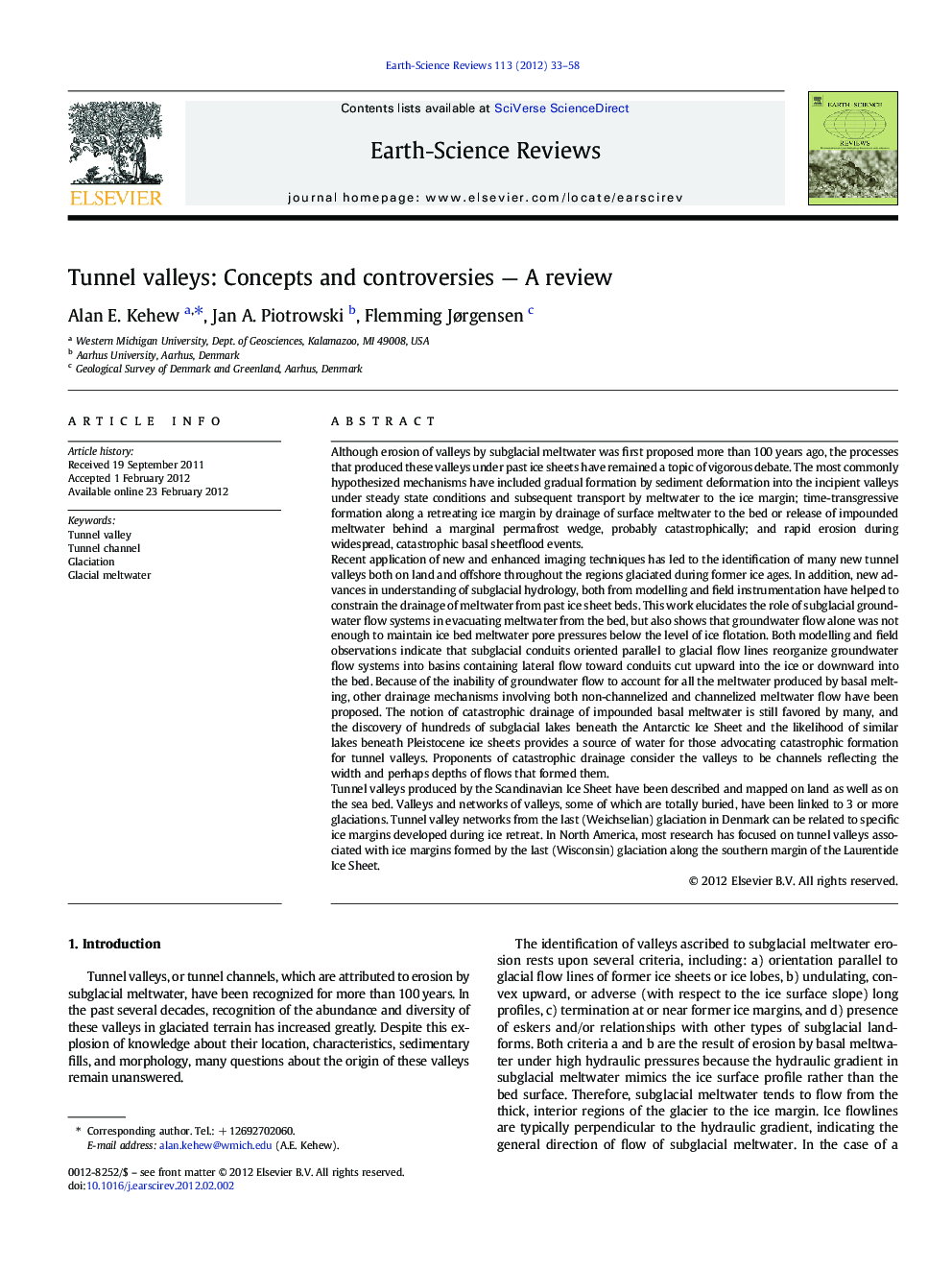| کد مقاله | کد نشریه | سال انتشار | مقاله انگلیسی | نسخه تمام متن |
|---|---|---|---|---|
| 4725926 | 1639991 | 2012 | 26 صفحه PDF | دانلود رایگان |

Although erosion of valleys by subglacial meltwater was first proposed more than 100 years ago, the processes that produced these valleys under past ice sheets have remained a topic of vigorous debate. The most commonly hypothesized mechanisms have included gradual formation by sediment deformation into the incipient valleys under steady state conditions and subsequent transport by meltwater to the ice margin; time-transgressive formation along a retreating ice margin by drainage of surface meltwater to the bed or release of impounded meltwater behind a marginal permafrost wedge, probably catastrophically; and rapid erosion during widespread, catastrophic basal sheetflood events.Recent application of new and enhanced imaging techniques has led to the identification of many new tunnel valleys both on land and offshore throughout the regions glaciated during former ice ages. In addition, new advances in understanding of subglacial hydrology, both from modelling and field instrumentation have helped to constrain the drainage of meltwater from past ice sheet beds. This work elucidates the role of subglacial groundwater flow systems in evacuating meltwater from the bed, but also shows that groundwater flow alone was not enough to maintain ice bed meltwater pore pressures below the level of ice flotation. Both modelling and field observations indicate that subglacial conduits oriented parallel to glacial flow lines reorganize groundwater flow systems into basins containing lateral flow toward conduits cut upward into the ice or downward into the bed. Because of the inability of groundwater flow to account for all the meltwater produced by basal melting, other drainage mechanisms involving both non-channelized and channelized meltwater flow have been proposed. The notion of catastrophic drainage of impounded basal meltwater is still favored by many, and the discovery of hundreds of subglacial lakes beneath the Antarctic Ice Sheet and the likelihood of similar lakes beneath Pleistocene ice sheets provides a source of water for those advocating catastrophic formation for tunnel valleys. Proponents of catastrophic drainage consider the valleys to be channels reflecting the width and perhaps depths of flows that formed them.Tunnel valleys produced by the Scandinavian Ice Sheet have been described and mapped on land as well as on the sea bed. Valleys and networks of valleys, some of which are totally buried, have been linked to 3 or more glaciations. Tunnel valley networks from the last (Weichselian) glaciation in Denmark can be related to specific ice margins developed during ice retreat. In North America, most research has focused on tunnel valleys associated with ice margins formed by the last (Wisconsin) glaciation along the southern margin of the Laurentide Ice Sheet.
Journal: Earth-Science Reviews - Volume 113, Issues 1–2, June 2012, Pages 33–58